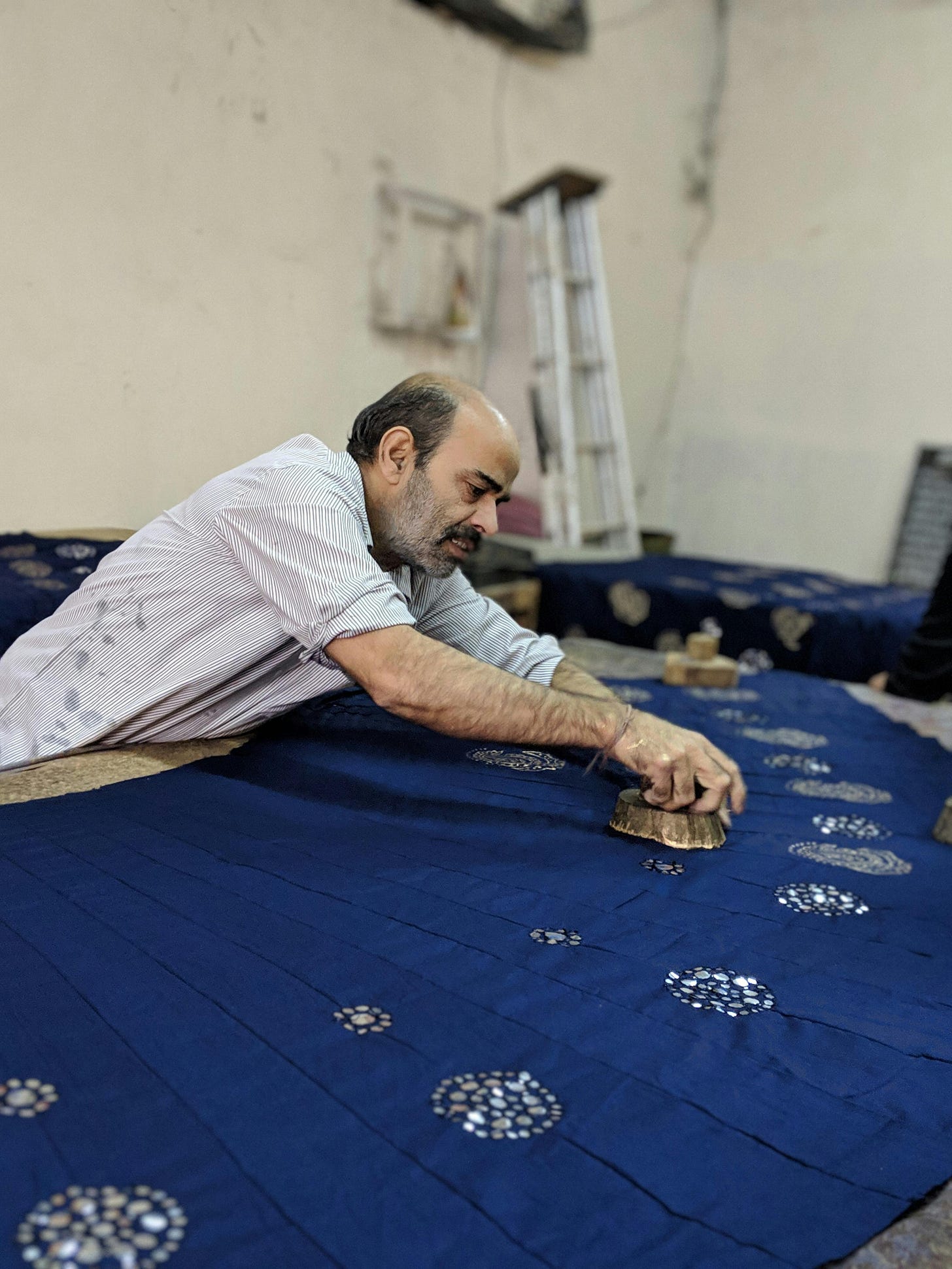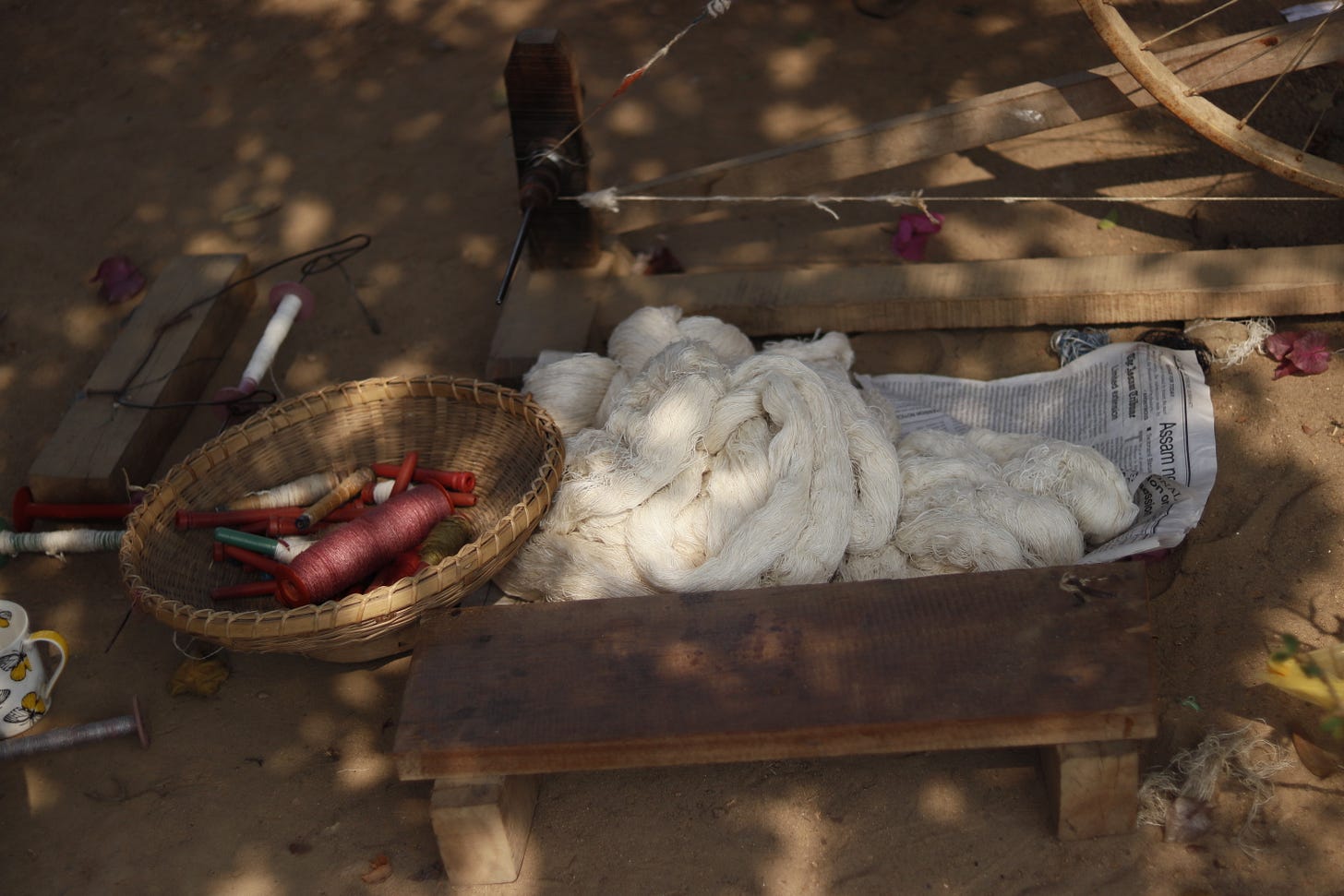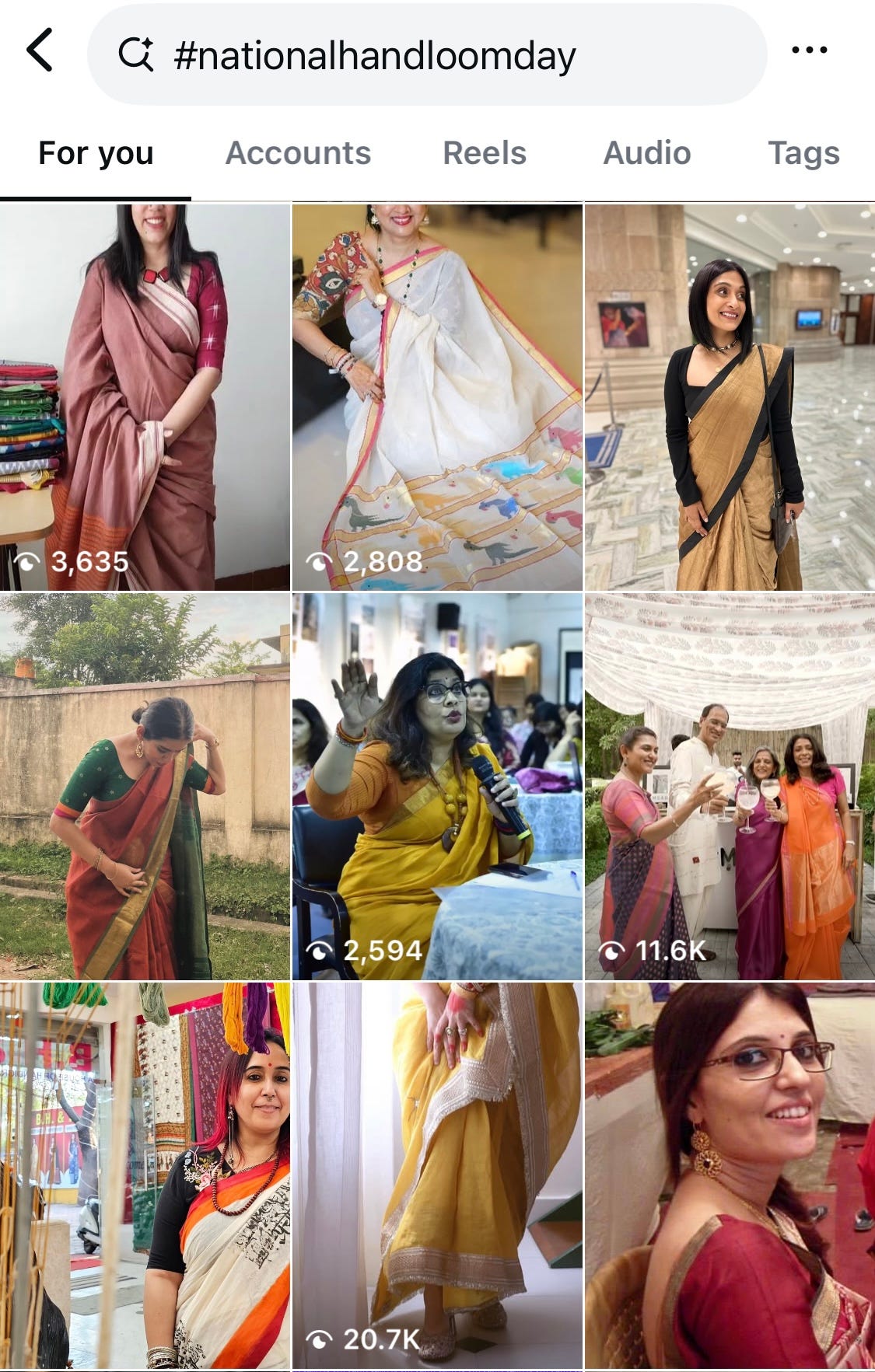Millennials Embraced Indian Handlooms. But What’s the New Concern?
A personal observation on what’s changed in the handmade fashion space and what still needs attention.
I became a craft entrepreneur 10 years ago. I was 25 and my peers were obsessively shopping trends from the local and global fast fashion brands.
This newsletter is a reflection on how my generation went from loving Zara to embracing Indian handloom brands, and my current concerns in relation to the increasing number of brands that claim to be “sustainable” and “handmade”.
The past reflection was originally written pre-COVID (and published in Oct 2020), at a time when conversations around sustainability were gaining visible traction across the Indian fashion industry.
The Style Gap: Reflections from the past
As sustainability began to dominate global conversations, a few years ago, the Indian fashion landscape wasn't far behind. Both established and emerging designers were beginning to take the eco-friendly, ethical route.
Millennials, especially, were becoming more vocal about climate change. Many reports even showed that they were willing to pay more for sustainable products. Yet, Indian handlooms somehow remained absent from most of their wardrobes. While they might swap their regular tees for organic cotton ones, handlooms still seemed restricted to festive-wear, and worn only to a wedding or a puja.
This gap made me wonder:
Why haven't Indian handlooms become everyday essentials for the youth?
Despite India’s treasure trove of handmade textiles, most young people still associated them with “traditional” clothing. Handloom fashion, for many, still meant sarees and kurtas.
Then there was the issue of the “cool factor.”
Sustainable clothing, especially handloom, has often been dismissed as “boxy,” “loose,” or “not stylish enough.” And let’s be honest, style matters, especially when you're young and navigating a world filled with trend cycles and Instagram aesthetics.
But here’s the thing - the desire to look cool and the desire to do good don’t have to be at odds. The fashion industry needed to tune in more closely to what young people actually want and deliver accordingly.
It’s okay if the youth don’t want to wear a saree or even a kurta every day. What if they want a well-cut pair of trousers or a sharp fitted skirt in handwoven cotton? Why not?
Boxy is great. Boxy is breathable. But not everything has to be boxy.
Innovation in handloom fabrics was crucial. So was styling. So was storytelling. And yes, influencer marketing, pop-culture references, fun photoshoots - all of it helps. If we wanted handlooms to be embraced by the young, we had to meet them where they were.
Update: 2025 Reflections
When this piece was originally written, millennials had just begun earning. Most were following their favourite celebrities, experimenting with global trends, and many were deeply entangled in fast fashion.
But a few years and a pandemic later, many of those same millennials have changed. There’s more thoughtfulness. More comfort with personal style. More appreciation for practicality, especially in Indian climates. Boxy and airy? Turns out it’s perfect for our weather.

The brands have also shown up.
Today, handloom-based trousers, bralettes, skirts, jackets, etc are all available and often gorgeous. Mixing heritage weaves with contemporary silhouettes isn’t niche anymore. It’s something you’ll see on the beach in Goa or in a Bangalore office.

I know people who once swore by Zara and H&M, who now actively avoid fast fashion. That shift is visible. It’s honest. And personally, I love it.
It feels like we’re finally accepting heritage with everyday practicality.
But I also have new questions.
Are there now too many brands doing the same thing?
Is fair pricing still an issue, especially for artisans and weavers in rural India?
Is the current love for handloom a true cultural shift, or just a trend wave that might pass?
I love a good block-printed dress but when every brand starts to look the same, what happens to originality? Shouldn’t there be stronger design identities? More diversity in silhouettes? Bolder ideas?
And then comes the bigger worry: Authenticity.
Machine-made textiles are increasingly being passed off as handmade. Words like block print, kalamkari, batik, and ikat are thrown around too casually. Machine-printed goods are being marketed as artisanal or crafted and that, to me, is dangerous.

Not just because it misleads customers but because it undermines the very foundation of handmade industries.
*block print, kalamkari, batik, and ikat - These are names of different handmade crafts.*artisanal - handmade by artisans.I’ve worked in this space for years, so I keep a close eye on the shift. But for someone who’s just discovering handlooms or falling in love with crafts for the first time - how do they know what’s real?
How can we help them differentiate between a screen print and a hand block? A powerloom and a handloom? A surface story and the truth?
That’s the challenge now.
Not just making handlooms look cool, but making sure they’re respected. Not just trending but trusted.
I’d love to hear your thoughts. Have you found yourself wearing more Indian handmade pieces lately? Do you have a favourite brand doing it right? And how do you spot the fakes?
I am Namrata Gohain, a designer-turned-storyteller, writer and content producer. I document stories on responsible travel, crafts, cuisine, slow living and my creative journey.
You may also like:








